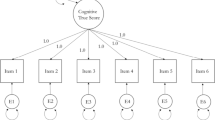Abstract
Prioritization and ranking of objects are primary needs in various substantive fields. It might be said that ranking and comparison are the first step in every risk assessment procedure, whatever the ‘risk’ is intended as: social, environmental, political or economic. Often objects to be ranked are valued by a multi-dimensional attribute which is usually transformed into a composite numerical score. In spite of conventional solutions, the author agrees with recent recommendations of performing multiple ranking, keeping indicators separated. Different innovative methods are analyzed and compared: Hasse diagrams method, POSAC and Nonlinear PCA. The first one stems directly from partial order theory, the second one may be seen as an approximation of Hasse representation in a two dimensional space, whilst the third one belongs to the wide set of non-linear multivariate techniques and it is particularly suitable in handling data of categorical type. Among them, the first two methods compare objects on the basis only on order property of data, whilst the last one simultaneously performs an optimal scale of qualitative attributes and a ranking of objects. The case study is based on the Eurobarometer survey carried out in 2002, at the request of the European Commission, which collects Europeans opinion about various political and social issues. The analysis is focused on users’ level of satisfaction about access easiness, cost, quality, information received and contracts of various services of general interest, such as telephone services, power (gas and electricity) providers, water and postal utilities, urban and rail transports. Separate indicators are set up for each facet of each service within different European regions. Eventually, the ranking of European regions is performed on the basis of the overall performance of services of general interest, as perceived by users. Selected methods lead to almost alike results, still with some differentiations due to different approaches used. As it frequently occurs, each method has its own advantages and pitfalls which are here explored and compared.
Similar content being viewed by others
References
Bertrand M, Mullainathan S (2001) Do people mean what they say? Implications for subjective survey data. Am Econ Rev 91, Papers and proceedings of the hundred thirteenth meeting of the American economic association, 67–72
Borg I and Shye S (1995). Facet theory. SAGE Publications, Thousand Oaks
Brüggemann R and Carlsen L (2006). Introduction to partial order theory exemplified by the evaluation of sampling sites. In: Brüggemann, R and Carlsen, L (eds) Partial order in environmental sciences and chemistry, pp 61–110. Springer, Berlin
Brüggemann R, Halfon E, Welzl G, Voigt K and Steinberg CEW (2001). Applying the concept of partially ordered sets on the ranking of near-shore sediments by a battery of tests. J Chem Inform Comp Sci 41: 918–925
Brüggemann R, Sørensen PB, Lerche D and Carlsen L (2004). Estimation of averaged ranks by a local partial order model. J Chem Inform Comp Sci 44: 618–625
Brüggemann R, Welzl G and Voigt K (2003). Order theoretical tools for the evaluation of complex regional pollution Patterns. J Chem Inform Comp Sci 43: 1771–1779
Bruno F and Cocchi D (2002). A unified strategy for building simple air quality indices. Environmetrics 13: 243–261
Ellis RN, Kroonenberg PM, Harch BD and Basford KE (2006). Non-linear principal component analysis: an alternative method for finding patterns in environmental data. Environmetrics 17: 1–11
Eurobarometer 58.0 (2002) September–October 2002. EORG Codebook, European Opinion Research Group
Eurobarometer 58.0 Special Edition (2002) Consumers’ opinions about services of general interest. Report by EORG for the European Commission “Health and Consumer Protection”, Directorate-General
Ferrari PA, Annoni P and Urbisci S (2006). A proposal for setting-up vulnerability indicators in the presence of missing data. Stat Appl 4: 73–88
Gifi A (1990). Nonlinear multivariate analysis. Wiley, New York
Johnson VE and Albert JH (1999). Ordinal data modeling. Springer-Verlag, New York
Linting M, Meulman JJ, Groenen PJF and Vanderkooij AY (2007). Stability of nonlinear principal component analysis: an empirical study using the balanced bootstrap. Psychol Methods 12(3): 359–379
Michailidis G and de Leeuw J (1998). The Gifi system of descriptive multivariate analysis. Stat Sci 13: 307–336
Myers WL, Patil GP, Cai Y (2005) Exploring patterns of habitat diversity across landscapes using partial ordering. Technical Report Number 2005-0701 Technical Reports and Reprints Series. The Pennsylvania State University, pp 1–34
Patil GP and Taille C (2004). Multiple indicators, partially ordered sets and linear extensions: multi-criterion ranking and prioritization. Environ Ecol Stat 11: 199–228
Shye S, Elizur D and Hoffman M (1994). Introduction to facet theory content design and intrinsic data analysis in behavioral research, applied social research methods series, 35. SAGE Publications, Thousand Oaks London New Delhi
Smith RM and Smith EV (2004). Introduction to rasch measurement: theory, models and applications. JAM Press, Maple Grove, Minnesota
SPSS 14.0 (2005) http://www.spss.com
SYSTAT 11 (2006) http://www.systat.com
Trotter WT (1992). Combinatorics and partially ordered sets: dimension theory. The Johns Hopkins University Press, Baltimore and London
Voigt K, Welzl G and Brüggemann R (2004). Data analysis of environmental air pollution monitoring systems in Europe. Environmetrics 15: 577–596
Author information
Authors and Affiliations
Corresponding author
Rights and permissions
About this article
Cite this article
Annoni, P. Different ranking methods: potentialities and pitfalls for the case of European opinion poll. Environ Ecol Stat 14, 453–471 (2007). https://doi.org/10.1007/s10651-007-0041-0
Received:
Revised:
Published:
Issue Date:
DOI: https://doi.org/10.1007/s10651-007-0041-0




